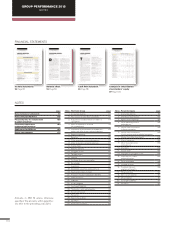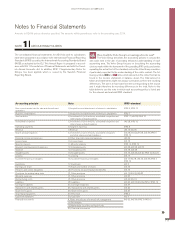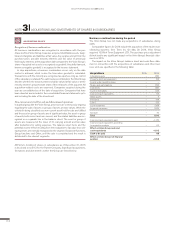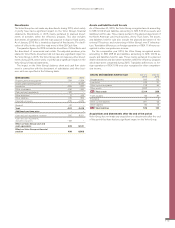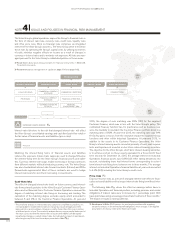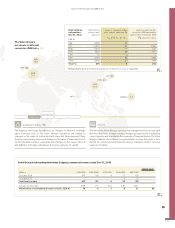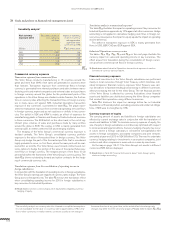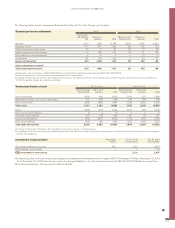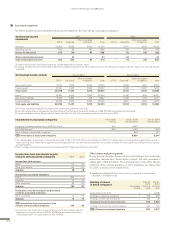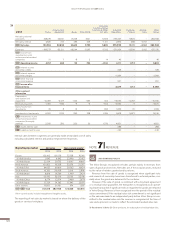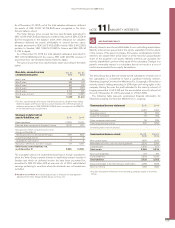Volvo 2015 Annual Report Download - page 122
Download and view the complete annual report
Please find page 122 of the 2015 Volvo annual report below. You can navigate through the pages in the report by either clicking on the pages listed below, or by using the keyword search tool below to find specific information within the annual report.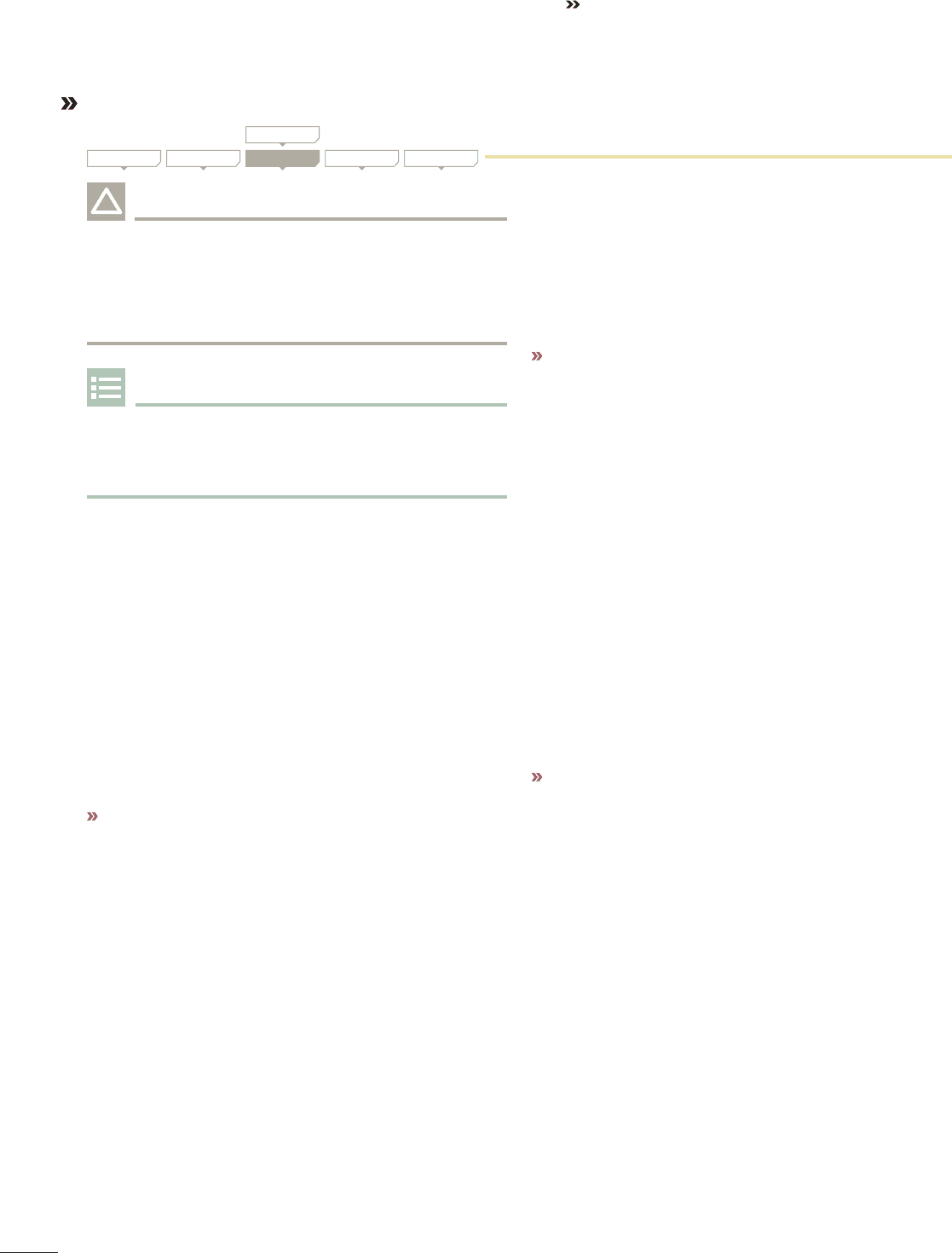
Goals and policies in financial risk management (cont.)
CREDIT RISKS
Credit risks are defined as the risk that the Volvo Group does not receive
payment for recognized accounts receivable and customer-financing
receivables (commercial credit risk), that the Volvo Group’s investments
are unable to be realized (financial credit risk) and that potential profit is
not realized due to the counterparty not fulfilling its part of the contract
when using derivative instruments (financial counterparty risk).
POLICY
The objective of the Volvo Group Credit Policy is to define and measure
the credit exposure and control the risk of losses deriving from credits to
customers, credits to suppliers, counterparty risks and Customer Dealer
Financing activities.
Commercial credit risk
The Volvo Group’s credit granting is steered by Group-wide policies and
customer-classification rules. The credit portfolio should contain a distri-
bution among different customer categories and industries. The credit
risks are managed through active credit monitoring, follow-up routines
and, where applicable, product repossession. Moreover, regular monitor-
ing ensures that the necessary allowances are made for incurred losses
on doubtful receivables. In Notes 15 and 16, ageing analysis are pre-
sented of customer-financing receivables overdue and accounts receiva-
bles overdue in relation to the reserves made.
The customer-financing receivables in the Volvo Group’s Customer
Finance Operations amounted at December 31, 2015 to approximately
net SEK 103 billion (99). The credit risk of this portfolio is distributed over
a large number of retail customers and dealers. Collaterals are provided in
the form of the financed products. In the credit granting the Volvo Group
strives for a balance between risk exposure and expected return.
Read more about Volvo’s credit risk in Note 15 Customer-financing receivables.
The Volvo Group’s accounts receivables amounted as of December 31,
2015 to approximately net SEK 29 billion (31).
Financial credit risk
The Volvo Group’s financial assets are largely managed by Volvo Treasury
and invested in the money and capital markets. All investments must meet
the requirements of low credit risk and high liquidity. According to the Volvo
Group’s credit policy, counterparties for investments and derivative trans-
actions should have a rating better or equivalent to A from one of the
well-established credit rating institutions.
Liquid funds and marketable securities amounted as of December 31,
2015 to approximately SEK 24 billion (34).
Read more in Note 18 about Marketable securities and liquid funds within
the Volvo Group.
Financial counterparty risk
The use of derivatives involves a counterparty risk, in that a potential gain
will not be realized if the counterparty fails to fulfill its part of the contract.
To reduce the exposure, the Volvo Group enters into master netting
agreements (primarily so called ISDA agreements) with all counterparts
eligible for derivative transactions. The netting agreements provide the
possibility for assets and liabilities to be set off under certain circum-
stances, such as in the case of the counterpart’s insolvency. These net-
ting agreements have no effect on profit, loss or the position of the Volvo
Group, since derivative transactions are accounted for on a gross basis,
with the exception of derivatives with positive value amounting to SEK
0.6billion, netted against a fair value of a loan negative 0.6 billion, related
to hedge accounting. Read more in Note 30, Financial Instrument in foot-
note 2, under the table on page 155. Counterparty risk exposure for deriv-
atives is also limited through weekly cash transfers corresponding to the
value change of open contracts. The Volvo Group’s gross exposure from
positive derivatives, amounting to SEK 3,238 M (3,909) is reduced by
53% (60%) to SEK 1,531 M (1,582) by netting agreements and cash
deposits, so called CSA agreements. The Volvo Group is actively working
with limits per counterpart in order to reduce risk for high net amounts
towards individual counterparts.
Read more about the Volvo Group’s gross exposure from positive derivatives
per type of instrument in Note 30.
INTEREST-RATE RISKS CURRENCY RISKS CREDIT RISKS
FINANCIAL RISKS
OTHER PRICE RISKSLIQUIDITY RISKS
GROUP PERFORMANCE 2015 NOTES
120


